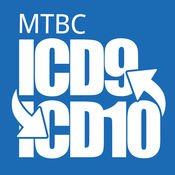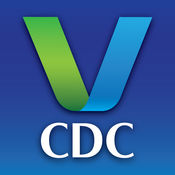-
Category Medical
-
Rating 4.81111
-
Size 79.2 MB
ICD10 Consult puts the most searchable, complete, current ICD10-CM resource at your fingertips. With flexible search that speaks your language, a deep understanding of the codes, instant ICD9 to ICD10 conversion, and more, this is the resource you wish your EMR provided. There are no bait-and-switch limited features.
ICD10 Consult 2018 alternatives
ASCVD Risk Estimator Plus
The updated ASCVD Risk Estimator Plus uses recent science and user feedback to help a clinician and patient build a customized plan to prevent heart disease and stroke together by estimating and monitoring change in 10-year ASCVD risk. Use the app to: Estimate a patients initial 10-year ASCVD risk using the pooled cohort equation Receive an individualized, risk-based, intervention approach Project the impact of specific interventions on a patients risk Guide clinician-patient discussion around customizing an intervention plan Update risk at follow-up based on a patients response to therapy using the Million Hearts Longitudinal modelAdvice from the app is derived from the 2013 ACC/AHA 2013 Guideline on the Treatment of Blood Cholesterol to Reduce ASCVD Risk and the 2016 Million Hearts Longitudinal ASCVD Risk Assessment Tool user guide. Therapeutic options should be determined after discussion between the patient and their care provider.
-
size 17.3 MB
MTBC ICD 9-10
MTBCs innovative application for ICD-10 transition is an extraordinary tool for medical practices and physicians to convert ICD-9 diagnostic codes to ICD-10 version of comprehensive coding. This handy time-saving tool includes all the ICD-9 codes and their respective ICD-10 codes. - One Step ICD 10 conversion- View detailed description against each ICD 10 codes- View all available ICD 10 alternatives against each ICD 9 codes- View ICD 9 code against ICD 10- Search ICD 10 and view its ICD 9 code- Easy and fast access to your Common Specialty codes and its conversion
-
size 11.4 MB
FP Notebook
Family Practice Notebook is a rapid access, point-of-care medical reference for primary care and emergency clinicians. Started in 1995, this collection now contains over 6100 interlinked topic pages divided into a tree of 31 specialty books and over 700 chapters. Privacy Policy/Terms & Conditions - http://www.fpnotebook.com/disclaimer.htm
-
size 65.5 MB
AHRQ ePSS
OverviewThe Electronic Preventive Services Selector (ePSS) is an application designed and developed by the U.S. Department of Health & Human Services (HHS), Agency for Healthcare Research and Quality (AHRQ), the Nations lead Federal agency for research on health care quality, costs, outcomes and patient safety. The ePSS application was developed to assist primary care clinicians identify the screening, counseling, and preventive medication services that are appropriate for their patients. Web Application: http://epss.ahrq.gov Compatible with major browsers: Internet Explorer 6.0 or later; Firefox 3.0 or later; Safari 4.0 or later; Opera 9.51; Google Chrome Latest recommendations information updated by the USPSTF User friendly interface Print friendly format availableMobile Application: Compatible version available for iPhone, iPod Touch, iPad and all other major mobile platforms * Full functionality of the ePSS Web application Full mobility without the need for wireless or internet connectivity Optional subscription for email notifications of available updates Automated ePSS data updates* View the supported device list to check for compatibility with your specific device Application downloads and data updates require internet connectivity
-
size 10.9 MB
CDC Vaccine Schedules
Quick access from CDC to ACIP-recommended immunization schedules, complete with footnotes. Intended for healthcare professionals recommending and administering vaccines to infants, children, adolescents, and adults. This tool provides:- Child and adolescent schedules, with immunization recommendations from birth through age 18- Adult schedule, listing recommended vaccines for adults by age group and by medical conditions- Contraindications and precautions table, with footnotes applying to schedulesFeatures include- Color coding coordinates with printed schedules- Hyperlinked vaccine name opens pop-up with dose specifics- Catch-up schedule for children 4 months through 18 years shows minimum dosing interval- Related vaccine resources and websites- Automatic updates
-
size 13.3 MB




